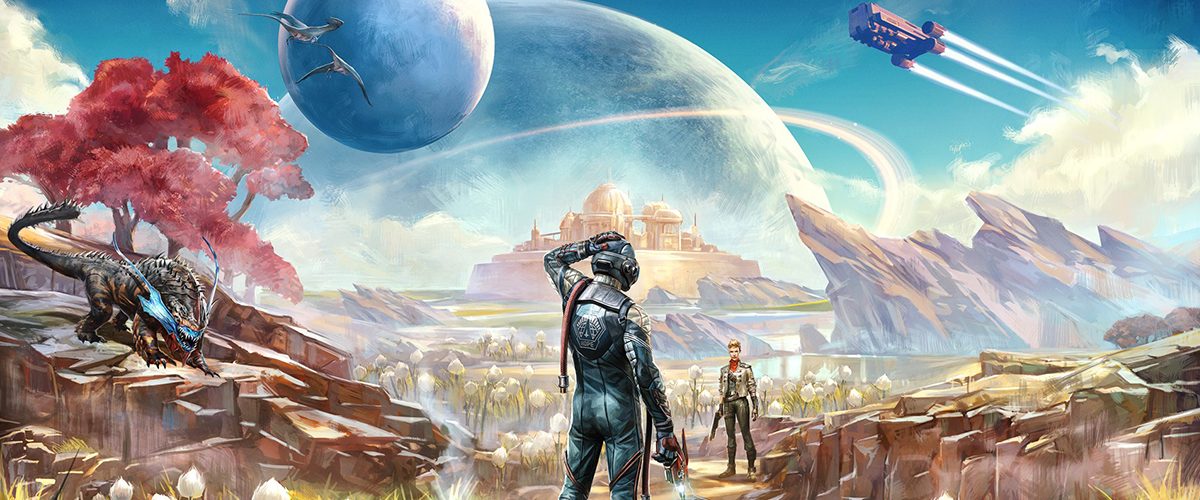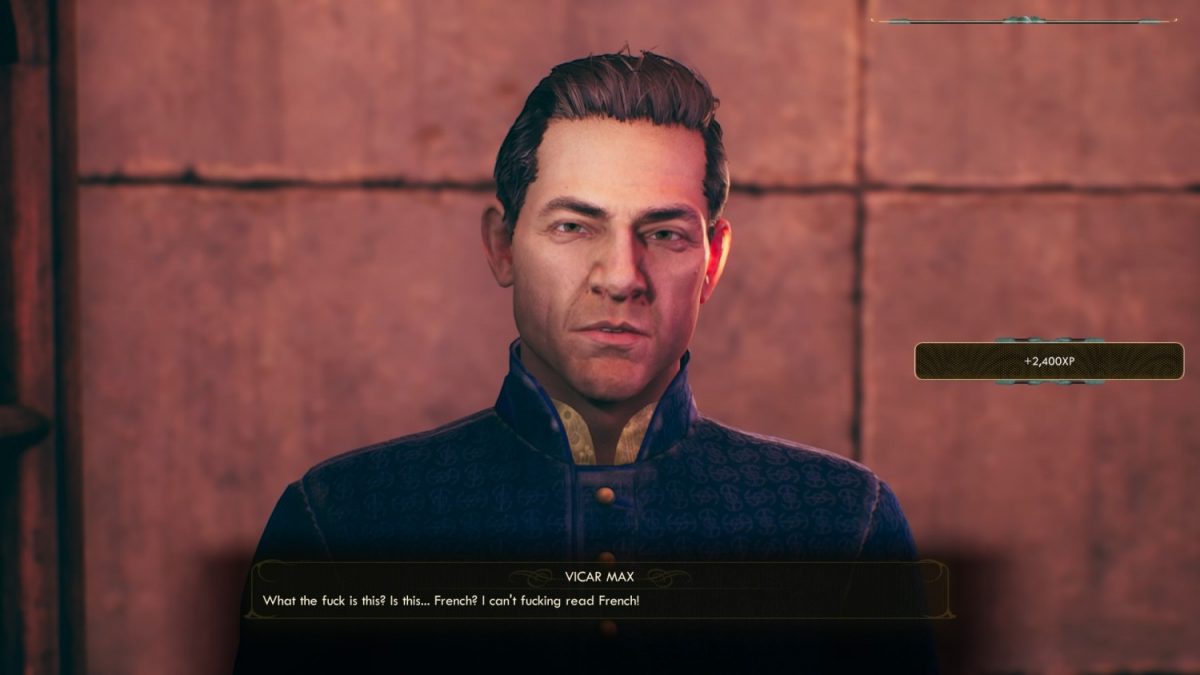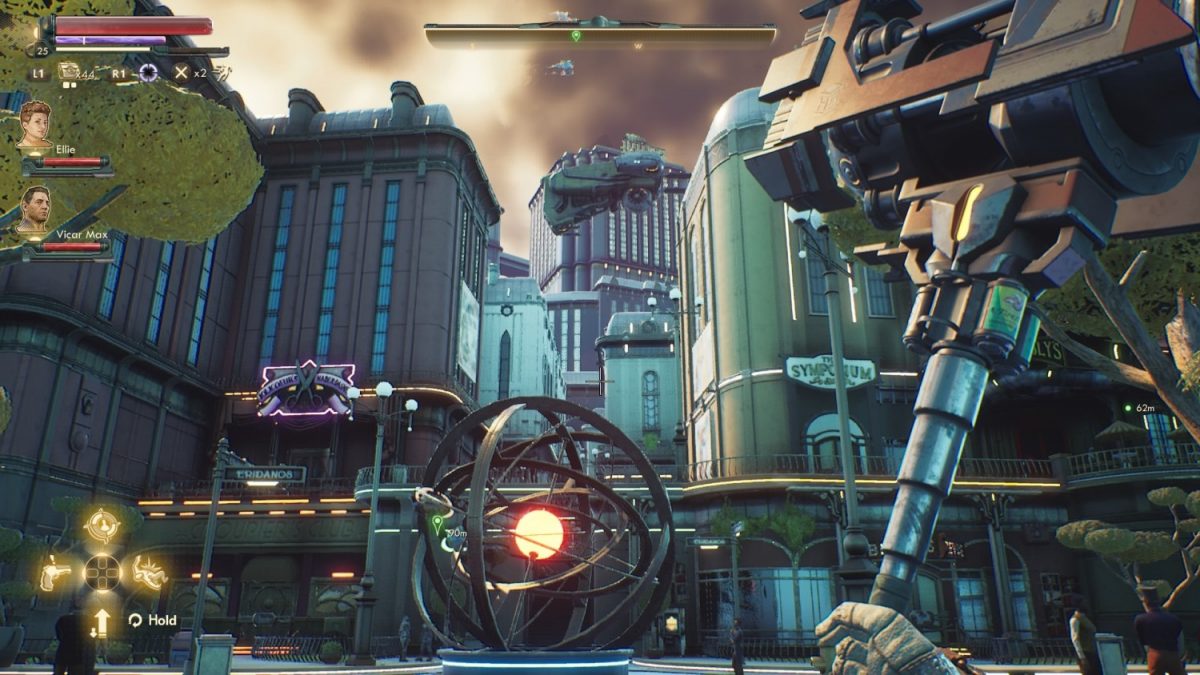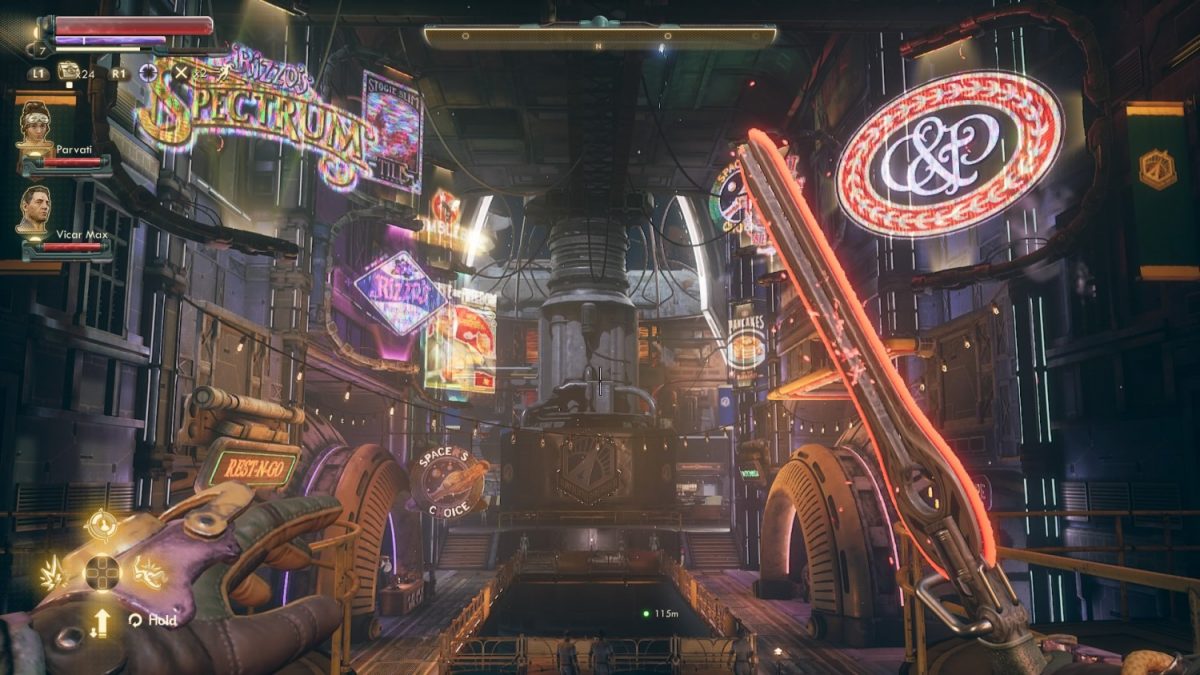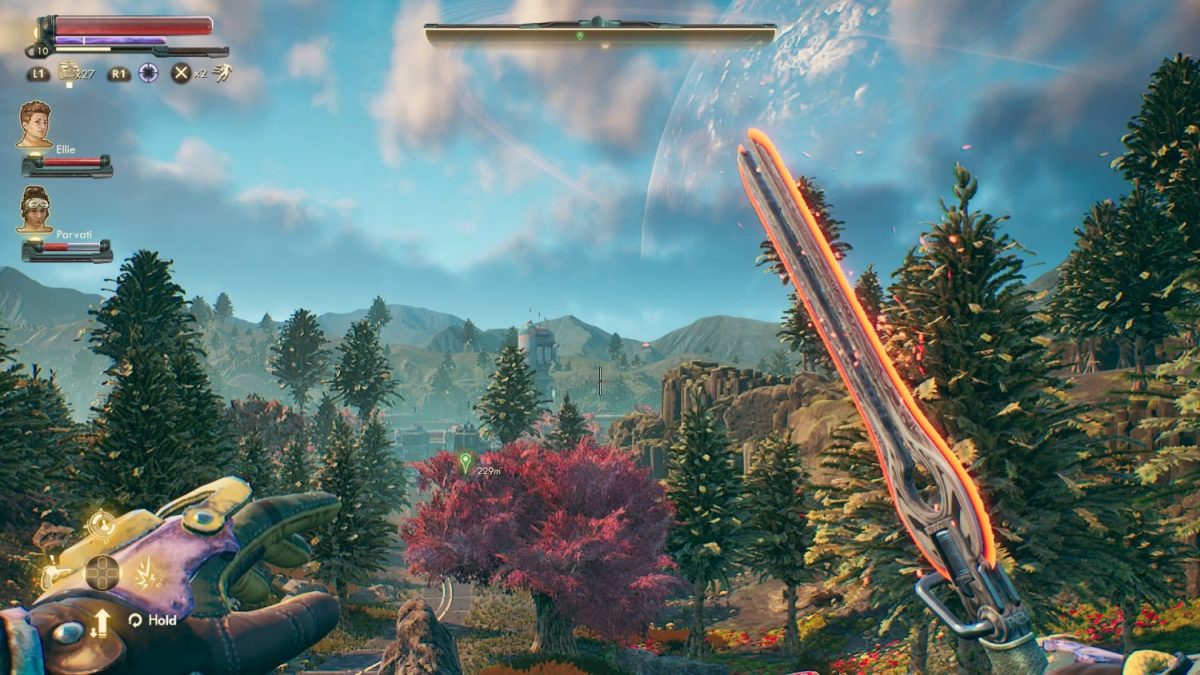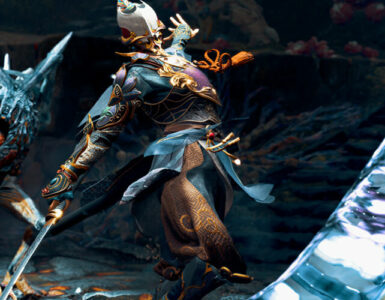Unlike its Japanese counterpart, the western single-player RPG has endured a relatively see-saw-like reputation over the years. While it started off humbly with the likes of Ultima and Wizardry, the genre truly kicked into high gear in the late 1990s, with the likes of the original Fallout and Fallout 2 by Black Isle Studios and Baldur’s Gate and its sequel by BioWare taking the gaming community by storm. Fast forward 20 years, and the genre has been reduced to a series of cash grabs (looking at you, Fallout 76 and Mass Effect: Andromeda), which rushed the development of these potentially good games and hurt the genre as a whole.
Despite this, the western RPG has been kept afloat for the past decade, almost single-handedly at times, by a one Obsidian Entertainment, thanks to their work on Fallout: New Vegas, and the recent Kickstarted Pillars of Eternity franchise. Their latest entry, The Outer Worlds, aims to not just keep the genre alive, but to push it back to relevance once more.

Did they succeed, though? That’s ultimately up to you to decide, but we think what they accomplished here can certainly indicate an upturn in the genre, which is already slowly returning to the fore, with the likes of Larian Studios’ Divinity: Original Sin 2 making waves as well. But we digress.
In The Outer Worlds, you play as the Stranger, a colonist who recently emerged from seventy years of cryostasis aboard the presumably-lost colony ship, the Hope. Your goal is to traverse the various planets in the Halcyon colony and find out how you fit into an era embroiled in political webbing, spun by the various megacorporations that have taken over Halcyon and its inhabitants. Thankfully, you won’t be alone in this, as you’ll be captaining the ship the Unreliable, accompanied by a crew of colourful companions whom you’ll meet along the way.

At first glance, one might simply write off The Outer Worlds as a blatant Fallout clone, more likely citing the more recent entries. While that argument seemingly rings true when you first pick it up, there are actually quite a number of significant differences that make this game stand out from the Bethesda games. To be fair, Obsidian did work on Fallout: New Vegas, which is why many could see similarities in this game to that.
If anything, The Outer Worlds represents an application of whatever Obsidian learned in their experience of the aforementioned New Vegas and Pillars of Eternity, and making something into their own. In fact, Obsidian has stolen tons of idea from other games and media, specifically the likes of their older games in terms of storytelling and gameplay, and TV shows such as Firefly and Futurama in terms of flavour and personality. It’s a dieselpunk game with a ton of satirical elements, and, in a nutshell, Obsidian has exceeded expectations with their writing alone.
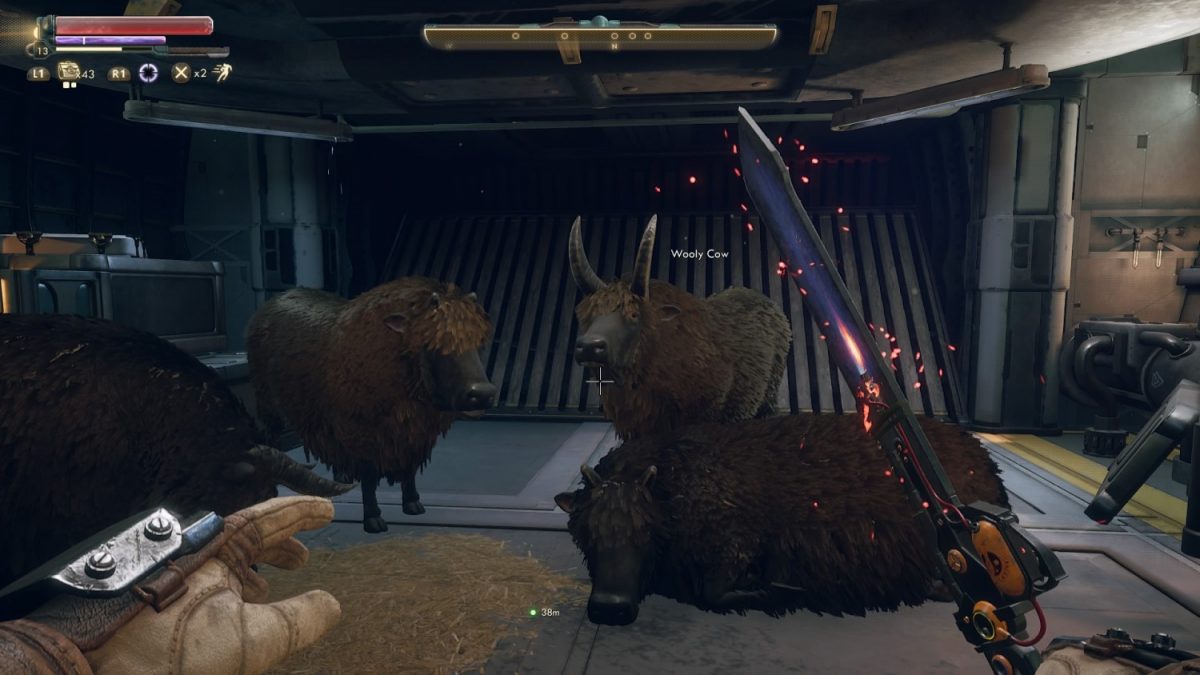
Storytelling is something many would associate Obsidian Entertainment with, and what they did on The Outer Worlds is no exception. The main plot, while actually a little short, is quite engaging, with numerous branching story paths leading you to vastly different quest chains and locales.
We tested this in two separate playthroughs, and what Obsidian billed as a vastly expansive story rings true; every playthrough will end up different in some aspect, and it all boils down to how you deal with scenarios. This is a trait that is seemingly all but lost in many modern RPGs today, having favoured vastly expansive sandboxes that actually contain very little substance.
Obsidian has taken that trend by the scruff of its neck, and used its superb storytelling nous and fleshed out virtually everything, from main quests to side quests, and everything in between. Granted, this game does contain an FPS element (more on that later), it is an RPG first, and Obsidian has emphasised that time and again as you play The Outer Worlds. This is highlighted by two important aspects of gameplay: social interaction and exploration.
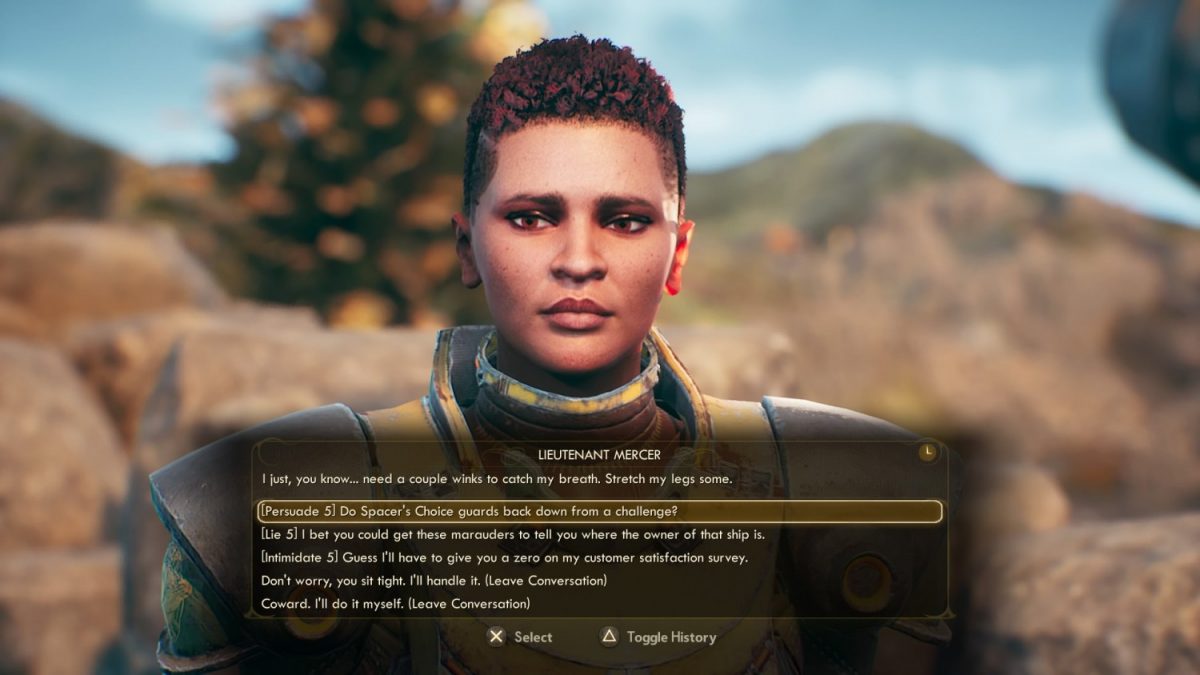
If this is your first Obsidian game, then there’s one very important aspect we encourage you to follow: exhaust all dialogue with NPCs. The ones with names, specifically, as they all are either part of a quest chain that you can pick up in your travels, or provide very significant lore elements if you like to get to know about Halcyon and its various worlds more.
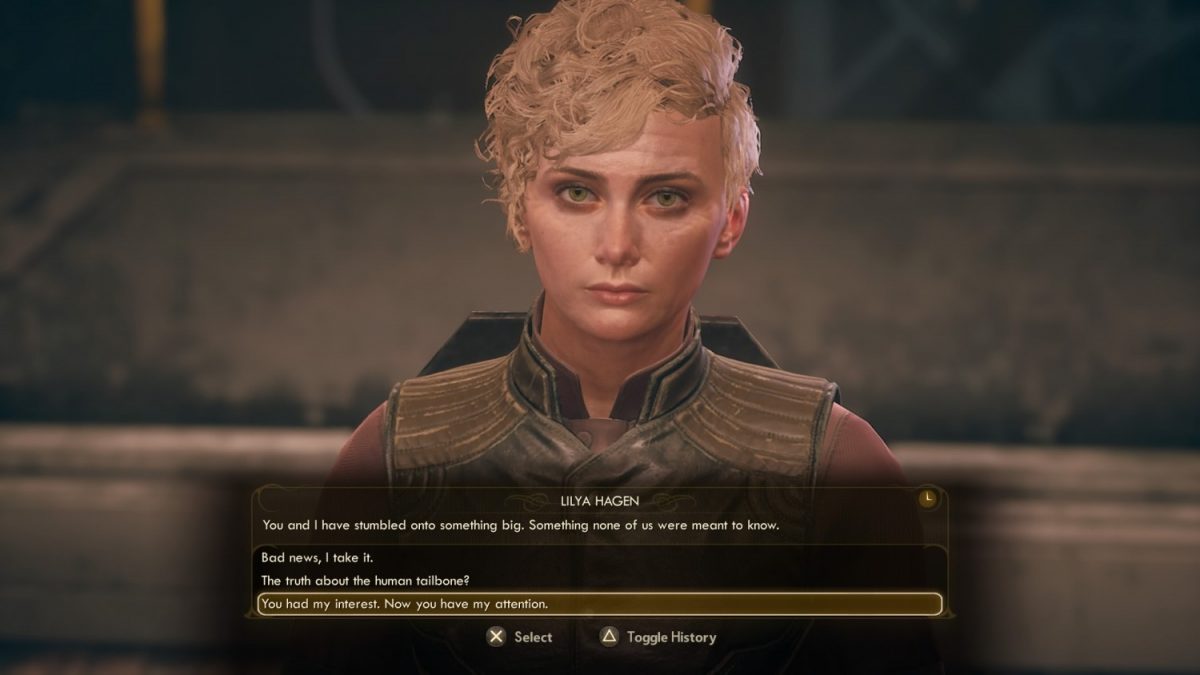
As the Stranger, you don’t have much of a voice (well, how you want to develop this character is totally up to you based on the dialogue choices you make), but all the other NPCs you meet in the game are what gives The Outer Worlds so much charm and personality. Every named NPC has their own wildly different view about the world, how they want to solve problems, how they see others, and so on. Even those who share the same ideals may harbour secrets that may paint them in vastly contrasting lights, if you’re able to coax it out of them.
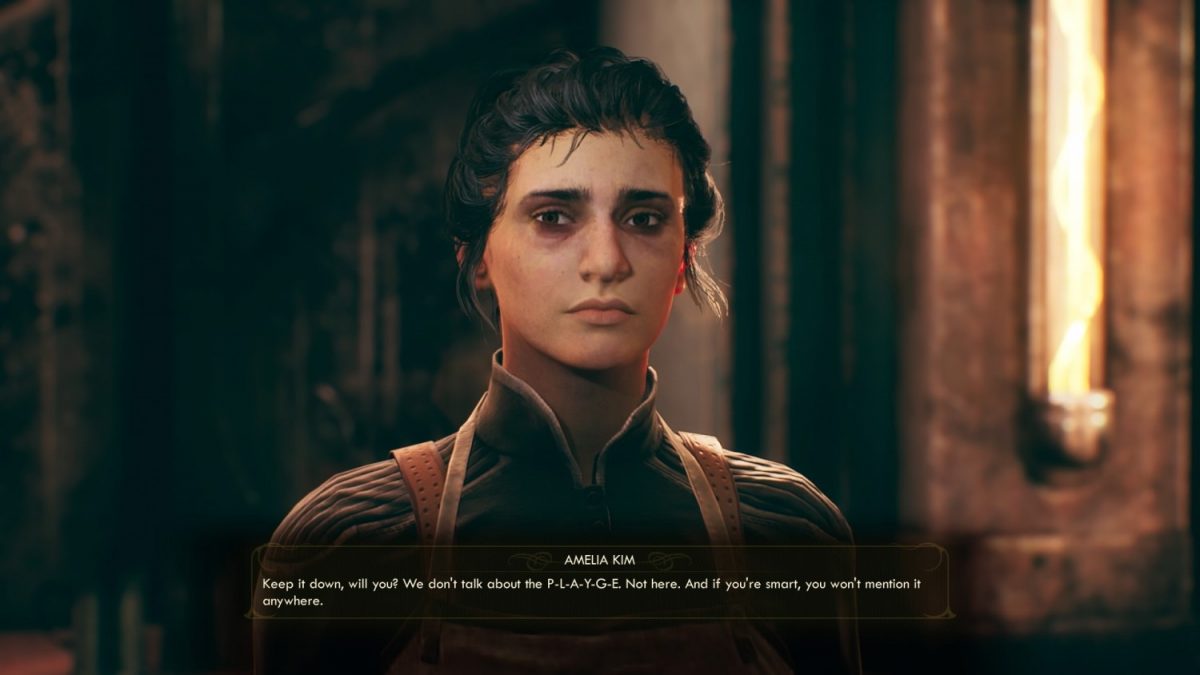
The best part is that they’re all voiced so you’re always engaged every time you engage in dialogue. It’s entertaining to just hear them voice out their opinions in their own funny little voices. And especially since a lot of these characters are waist-deep in corporate employment, their tired and jaded line delivery when reciting corporate slogans is simply golden.
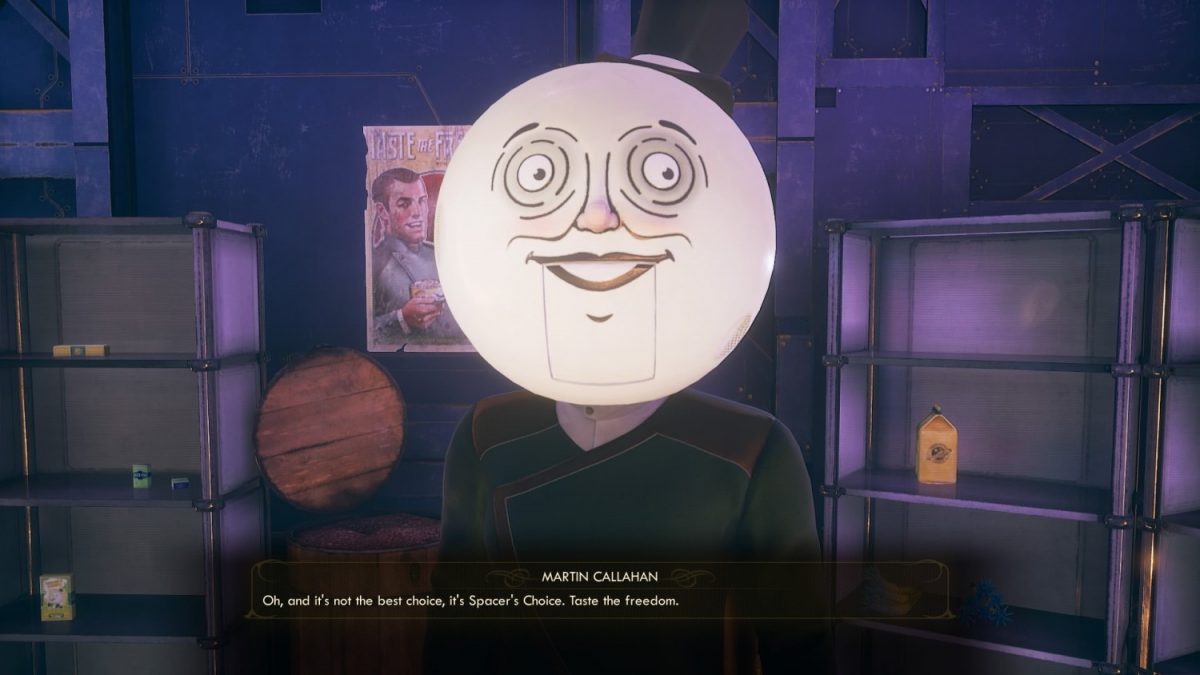
And remember the dialogue choices we mentioned? Trust us when we say it is highly satisfying to get an alternate outcome to a quest if you don’t simply one-track the dialogue (which is usually by picking the top line in the dialogue box) and explore all other options first. If you play your cards right, you could even complete an entire playthrough without spilling blood (not by your own hands, at least), by simply speaking to NPCs and whatnot.
While NPCs provide most of the driving forces of the story in The Outer Worlds, a little poking here and there in the various locations will certainly prove rewarding. Whether you’re on the hunt for rare loot, new areas, or even rare monsters to fight, there’s always something to be found in every nook and cranny of every area that you visit. The various terminals that you’ll find yourself interacting with a lot will contain juicy nuggets of information that fleshes out the characters in the vicinity, or the area itself, or, better yet, even start off a new quest. While these bits of fluff and additional lore felt a little overwhelming at times in Pillars of Eternity, it feels way more refined and straight to the point in The Outer Worlds, so it seems Obsidian has been taking notes from their earlier works.

And as a party-based RPG, you can’t forget your companions. There are only six of them, but they’re every bit as engaging as the other, each with their own wildly different world view, skills and combat abilities (more on these later), which make selecting your two companions every time you venture out possibly the second-largest headache outside of character creation.
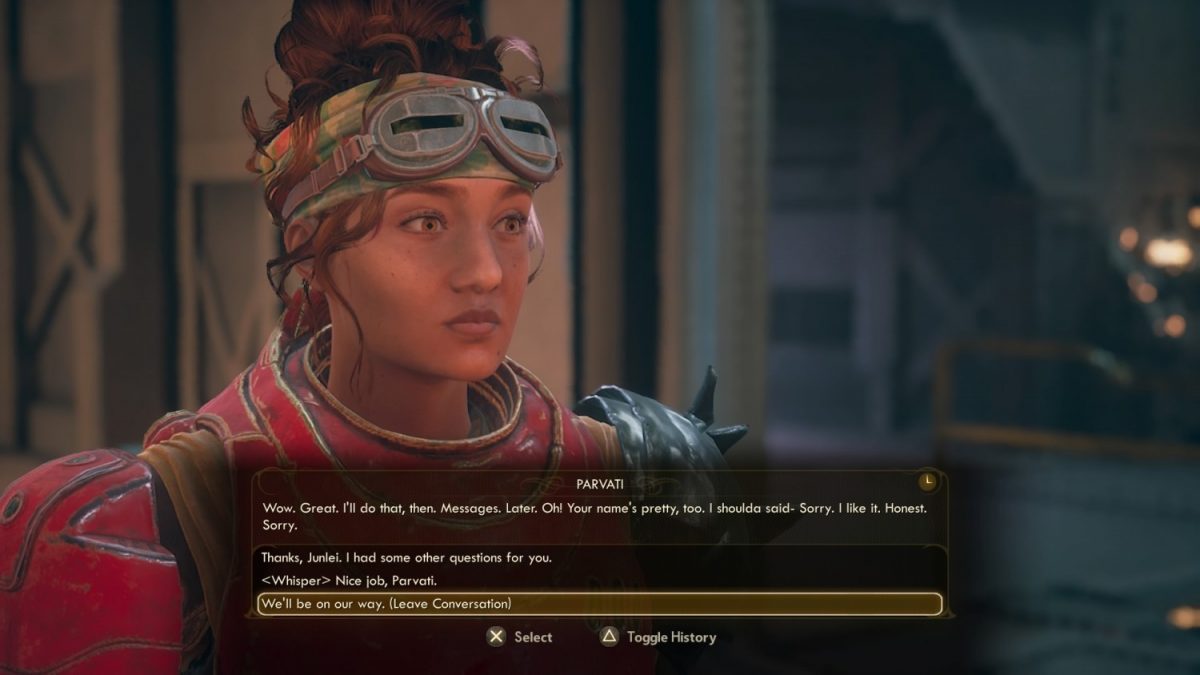
Parvati is an unabashed cutout of Kaylee from Firefly – a bubbly young mechanic with a passion for all things with nuts and bolts; Nyoka is a hunter who is constantly drunk; Felix is a diehard fan of tossball (the game’s sport) as well as an avid anarchist; Vicar Max is a priest with a shady criminal past; Ellie is a skilled doctor who also has a criminal background; and SAM (a personal favourite) is a repurposed cleaning bot who always blurts out corporate slogans at the most hilariously appropriate moments.
Heck, even the ship AI in the Unreliable, ADA (Autonomous Digital Astrogator), is an absolute peach to talk to, what with her coy remarks about being sentient and confusing you for the ship’s original dead captain.
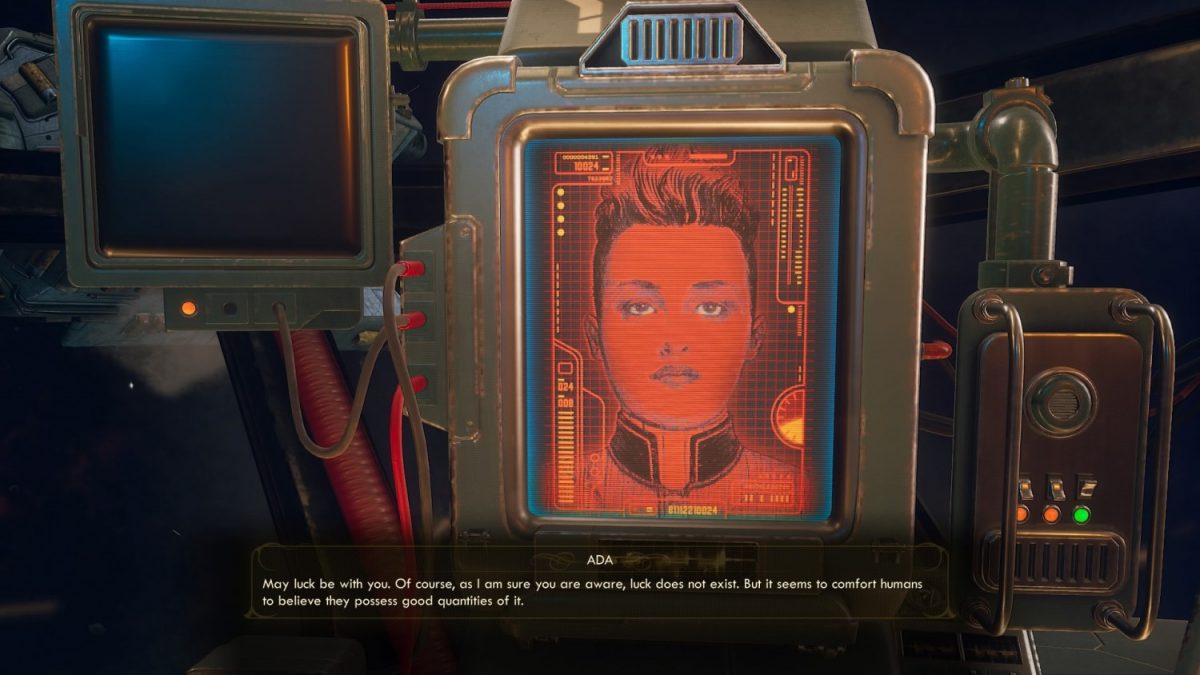
Regardless of which two companions you pick on your missions, simply having them hang around with you is just entertaining. They’ll all banter among themselves, almost always to comedic effect, and will not hesitate to give their own two cents while you’re conversing with other NPCs. And the cherry on the icing is that they’re all voiced superbly, from Horizon Zero Dawn’s Ashly Burch capturing the lightheartedness of Parvati, to Bruce Dinsmore (Assassin’s Creed III) as the mechanically upbeat SAM, all doing justice to their equally well-written scripts.
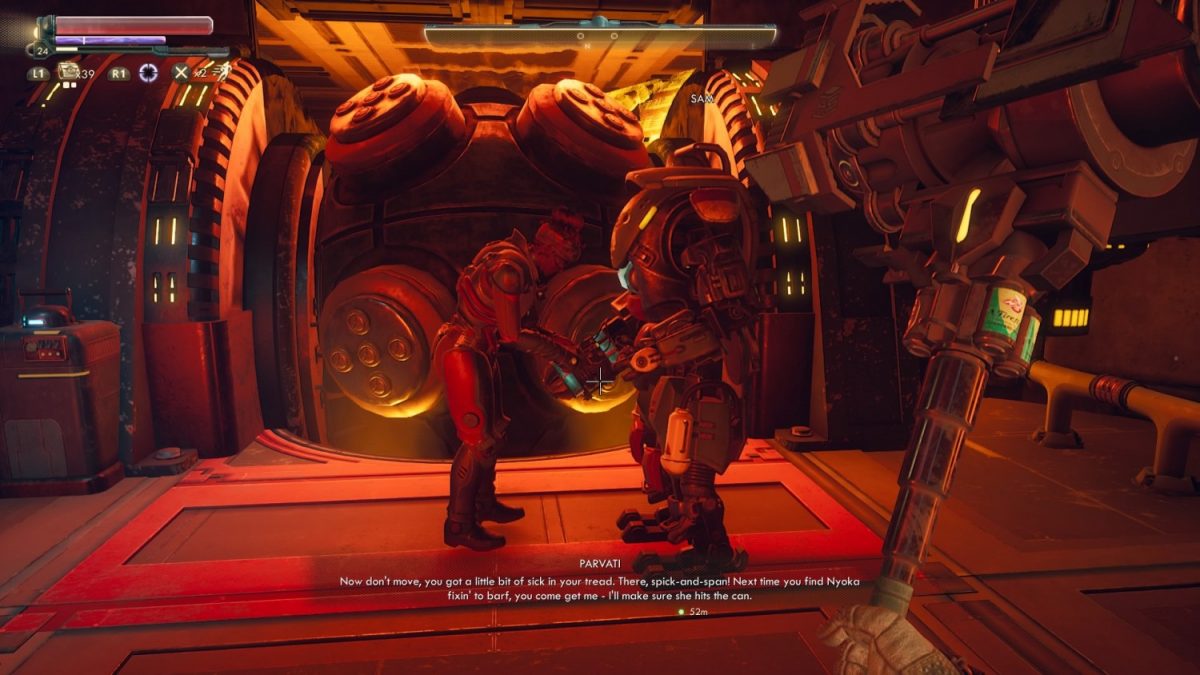
While you can absolutely complete a playthrough in The Outer Worlds non-violently, the larger majority will come to this game looking to beat face. For the most part, Obsidian deals with combat fairly well. This is another aspect that it shares quite commonly with Fallout, with firearms and melee weapons as your primary methods of dealing damage, and especially with the ability to momentarily slow down time via Tactical Time Dilation (TTD), and in it, the ability to hit enemy weak spots and apply debuffs depending on where you hit.
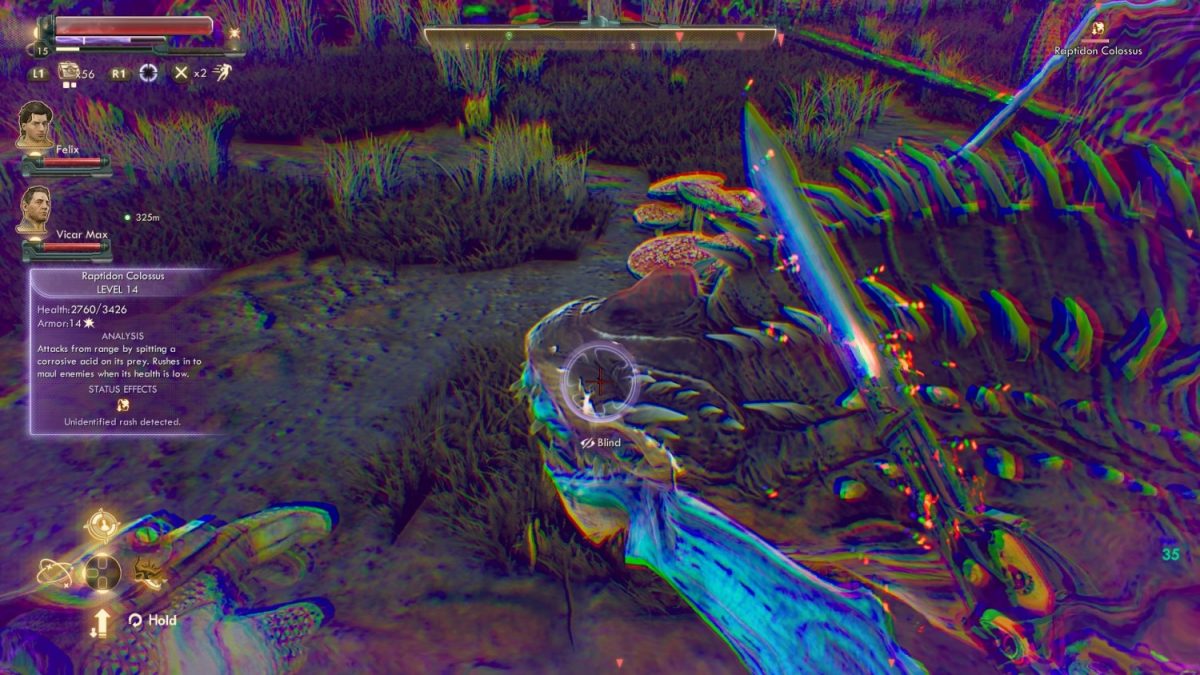
While it is very similar to Fallout in that regard, the choice to completely disregard TTD is what sets The Outer Worlds apart from its direct competition. In the recent Fallout games, you’d almost exclusively need to rely on the VATS system, especially in the harder difficulties, in order to survive combat encounters. Obsidian saw that inherent flaw and decided to do away with it, giving players the option to use it as a core component of their playstyle, or completely ignore it. This is a great design decision, as it strongly encourages different builds and loadouts from player to player.
While The Outer Worlds has FPS elements, it also has party-based RPG aspects as well that, again, reminds us that it is an RPG. Your companions aren’t just there to spice up your travels and dialogue, they are also there to help you kick human and monster butt. Each companion has their own set of combat abilities and passive bonuses that also improve your own. As such, it is a matter of picking which companion’s abilities and passives that will benefit you (unless you’re pursuing a companion quest, in which case the particular companion in question has to be there).
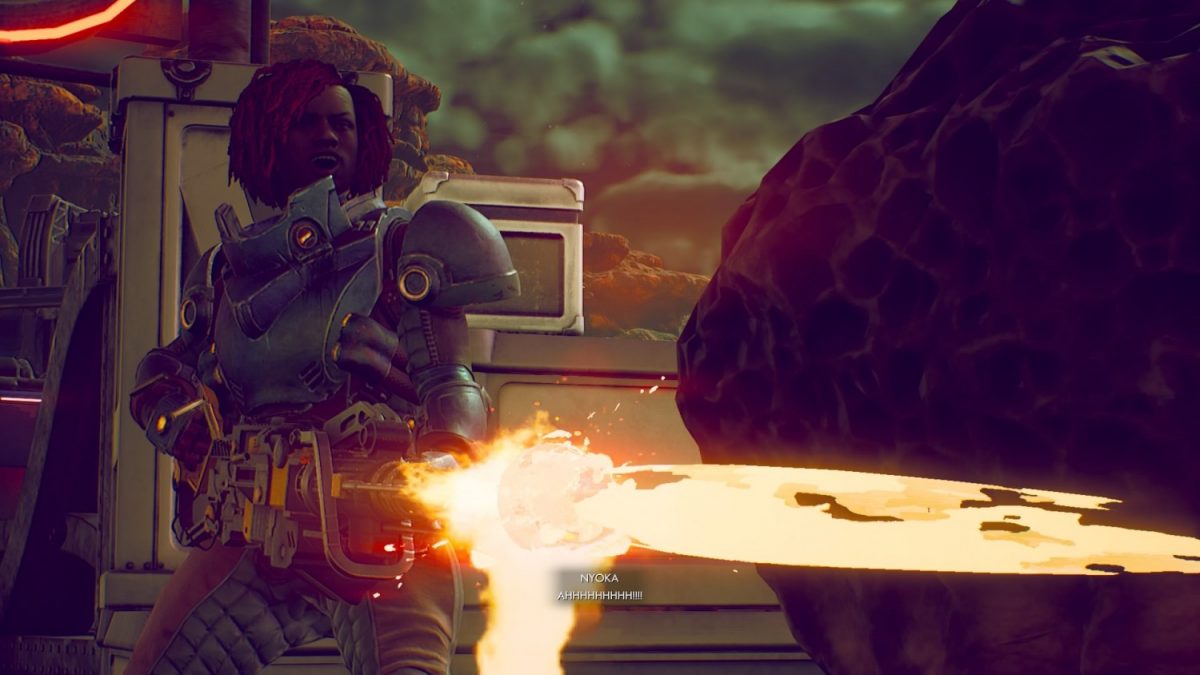
One issue with companions in game is that, while their active abilities are generally powerful, there isn’t an option to turn off the animation that comes with activating them. For the first few times, it’s great to see Nyoka scream as she sprays enemies with lead, but after the 30th time and beyond, it’s just downright annoying. Furthermore, once you get companions to wear helmets, you can’t remove them for some bizarre reason. You don’t have an option to toggle their helmets while in the game, which would’ve been nice because sometimes you just don’t want an expressionless helmet staring at you. Thankfully, you can see their faces when engaging them in dialogue. Still, it wouldn’t hurt to add that option in.
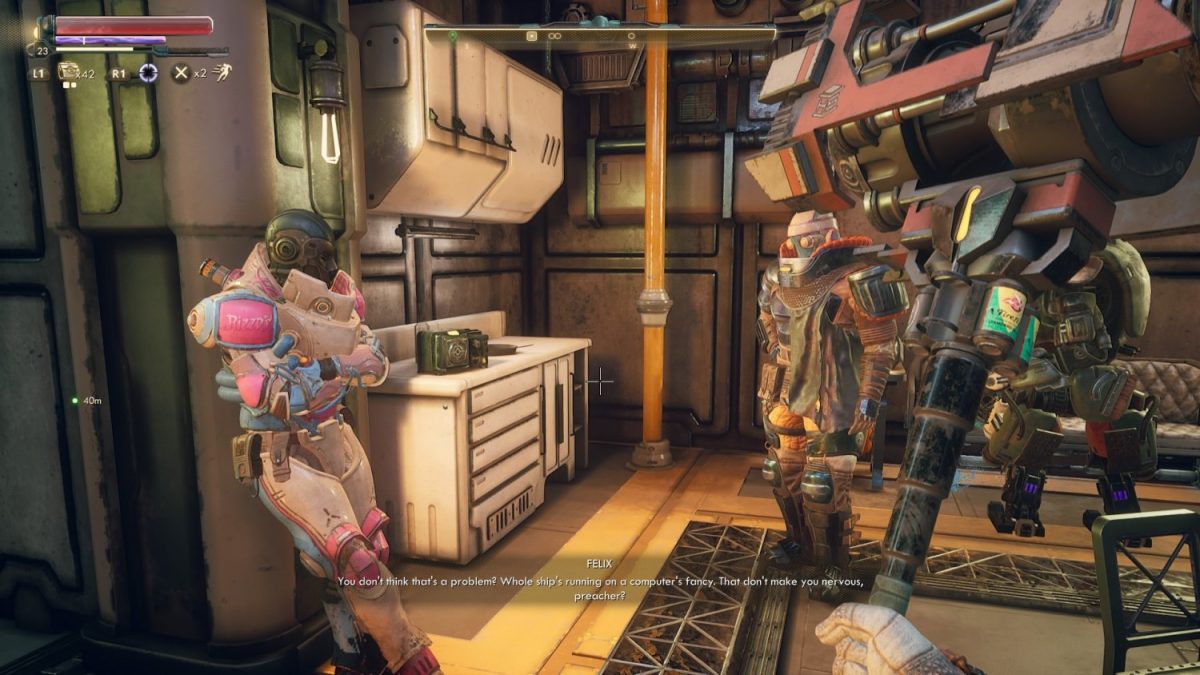
Leveling up in The Outer Worlds can be done in so many ways, thanks to the sheer options available to you with regards to how you can approach quests. If you’re going for a pacifist playthrough, you’ll earn just as much XP as if you choose to be a rampant murderer, killing anything and everything that moves. Of course, if you mix it up (like how we did), you’ll end up reaching the level cap (30) way before you even reach the story’s end. This is where The Outer Worlds’ replay value is hurt a little, as you may often find yourself over-leveled for a huge chunk of the game if you’re a completionist and want to pursue every side quest available to you. Not that it is a bad thing, but we’ve noticed that it does make the game a lot less challenging, even on the hardest difficulty, which may put off some who like a little more grit in their games.
Speaking of gaining levels, you’ll be able to upgrade your non-combat skills every level you gain, as well as assign Perks every other level. Perks are what make your playstyle different from the next person’s, as they provide buffs and enhancements to various aspects of gameplay, such as running speed, carrying capacity, headshot and weak point damage, TTD recharge rate, and so on. The options with which to build your character is dizzying, which makes it a great motivator for you to start a different playthrough just to try out a different playstyle. Some interesting builds include one that focuses on beefing up companions, so they do the killing for you, and even a Lone Wolf build, so you’ll be flying solo for the entire game.
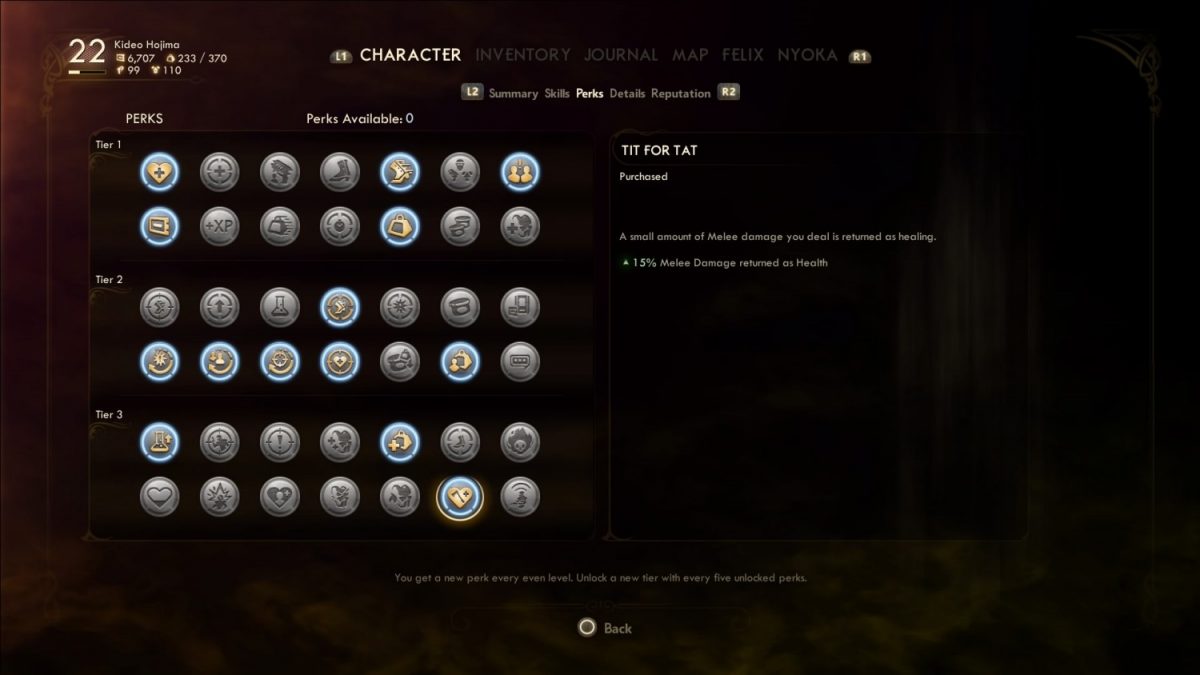
At max level, you’ll end up with just 15 Perks if you just play regularly. Thankfully, gameplay won’t feel too dull with the inclusion of the Flaw mechanic popping up. Basically, if you experience too much of a bad thing too often (such as getting struck by Acid damage too often, or being hit in the head too much), you might get the choice to contract a Flaw, which gives you debuffs in exchange for a free Perk point. This is an excellent piece of design by Obsidian, as you’re being given the choice to take up that additional handicap. This is where you’ll need to weigh the pros and cons of each Flaw, as depending on your playstyle, certain debuffs may give you more diminishing returns than what the Perk is worth.

And since The Outer Worlds is part shooter, we can’t forget about loot. Since you’re most likely bound to run into trouble during your playthrough, you’d best be decked out in good equipment. Starting off, you’ll most likely be scrounging for anything and everything you can get your hands on, but over time, you’ll accumulate a bunch of different weapons and armour. These weapons can be outfitted with various Mods and can be Tinkered with just to give you a bit more punch if you can’t find an immediate upgrade.
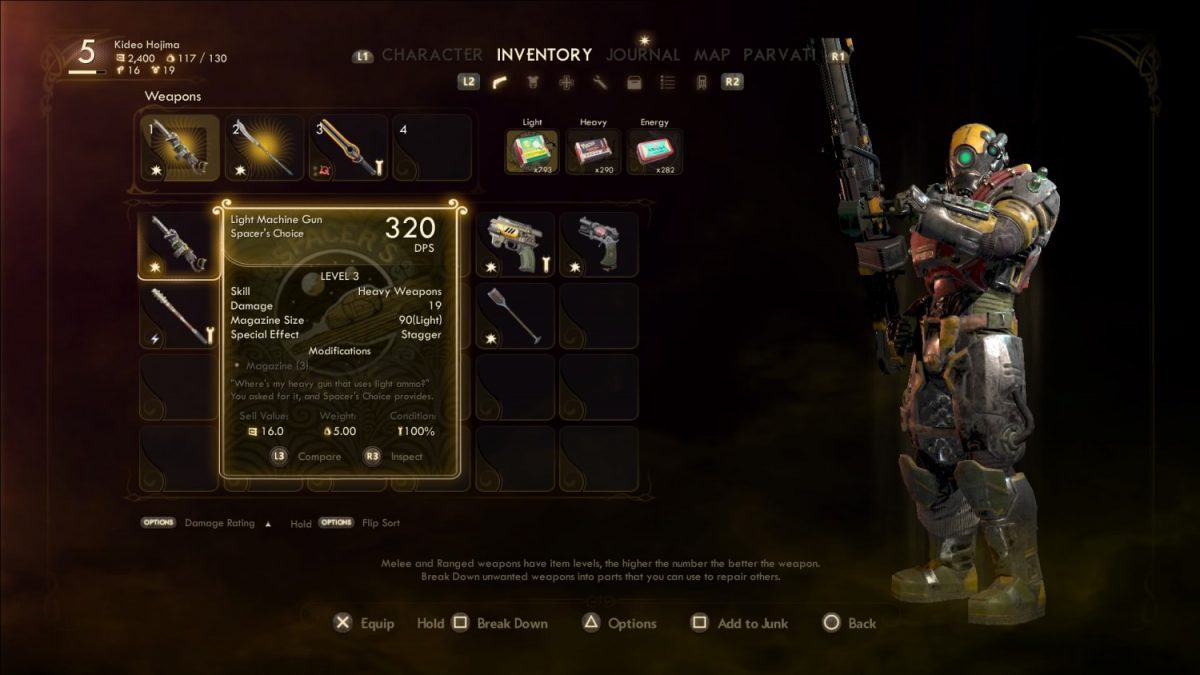
Players will also come across Unique weapons and armour, which are a step above the regular ones. These usually already come modded, as well as a slight mechanics tweak that makes them so fun to use. There’s a pistol that shoots ricocheting bullets, while there’s another that shoots spread shots like a shotgun, and so on.
But even more zany are the Science weapons that are a little trickier to find. But if you manage to get your hands on one, you’ll be grinning as wide as us when you use it. The effects that come from these Science weapons can range from shrinking people (yes, there’s a freaking shrink ray in this game!), to rearranging their faces, just to name a few. While there sadly isn’t one for every type of weapon, it is certainly a delight to simply use them for a change of pace.
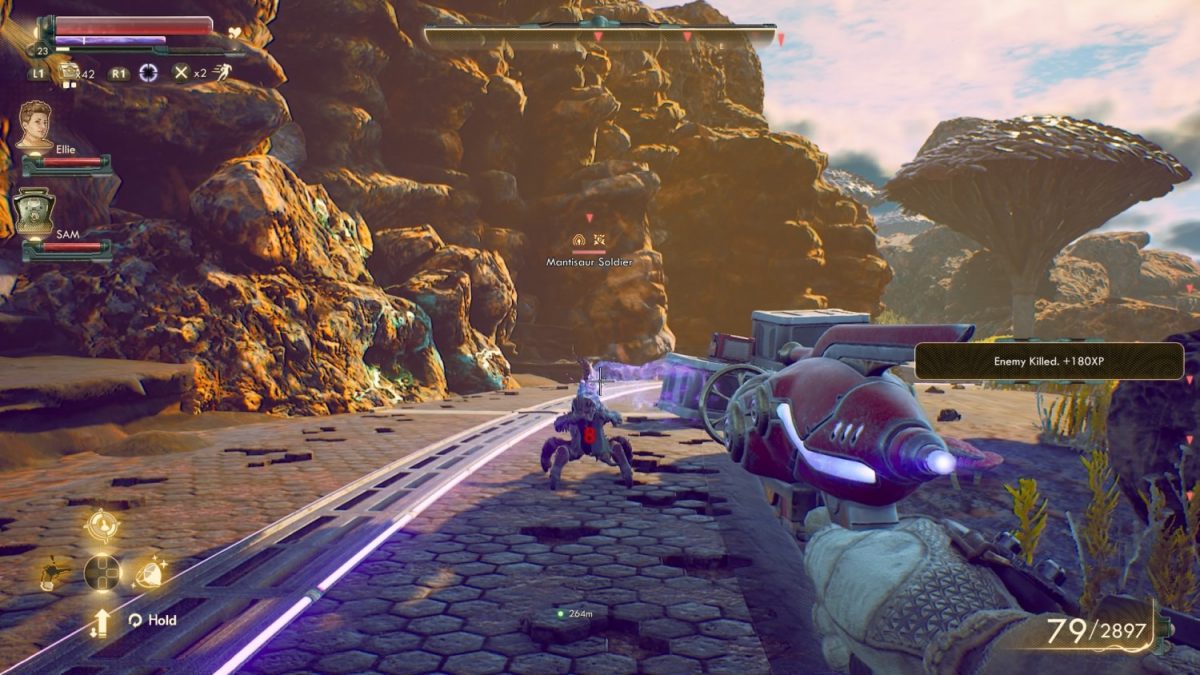
While there are quite a number of weapons for you to grind enemies to dust with, it is rather disappointing that there isn’t much design variance in the normal weapons in The Outer Worlds. A lot of the regular weapons and armour look very similar. In many cases, they’re just lazy colour palette swaps. What’s even more potentially frustrating is that many of the Unique weapons look so similar to regular ones, that you’ll have to rely on the differently-coloured highlight on your inventory screen to be able to differentiate one from the other. You might even be hard-pressed to constantly check the Buyback section of a store if you feel like you’ve accidentally sold one to a vendor.

Interplanetary and open-world exploration in video games has always been something that has fascinated by many, but so far, the execution of such a feat has more often than not been disappointing. The Outer Worlds does this rather well, albeit with the footnote that it scales things down considerably in service of a tighter story. To put it simply, if you’re coming into The Outer Worlds expecting something like No Man’s Sky meets The Witcher 3, then you’re in for a world of disappointment, because that’s not what Obsidian is aiming for.

Instead, what Obsidian has done is present to you various locations in different planets that you can travel to, each with their own small sandbox for you to explore. There is no open world here, per se, rather a series of different levels that you can freely roam about in. This may seem limiting at first, but is actually more beneficial to you, the player. Every major town you visit feels alive, robust, and lived-in, with people walking about, having their own little conversations.
The different locations themselves also do invoke the sense that you’ve traveled to a different planet. From the deserted badlands of Monarch, to the angular, corporate infrastructure of the cities in Byzantium, there is plenty to marvel at in terms of spectacle. The various colours and diegetic sounds of each area is wildly different, which further adds to the illusion that you’re traveling hundreds and thousands of miles to different planets in the Halcyon system, and from what we’ve experienced, it’s worked greatly in Obsidian’s favour.
That said, The Outer Worlds still does fall prey to making the different locations a little too big at times, or at least, just not as populated as you’d like. Some areas feel a little too barren, without so much as a little sprat scurrying about in the last kilometre that you’ve run. It’s understandable that certain locations are meant to be wastelands, but at times it feels like every planet with a wide, sprawling area will have patches of empty space, which does feel like a waste of space.
Secondly, having all the different areas separated from each other means one thing: loading screens. If you’re doing a quest that requires you to travel to various locations, be prepared to sit through a ton of them. No matter how entertaining they may be, they’re still frustrating time-wasters, and do take away from the immersion at times.
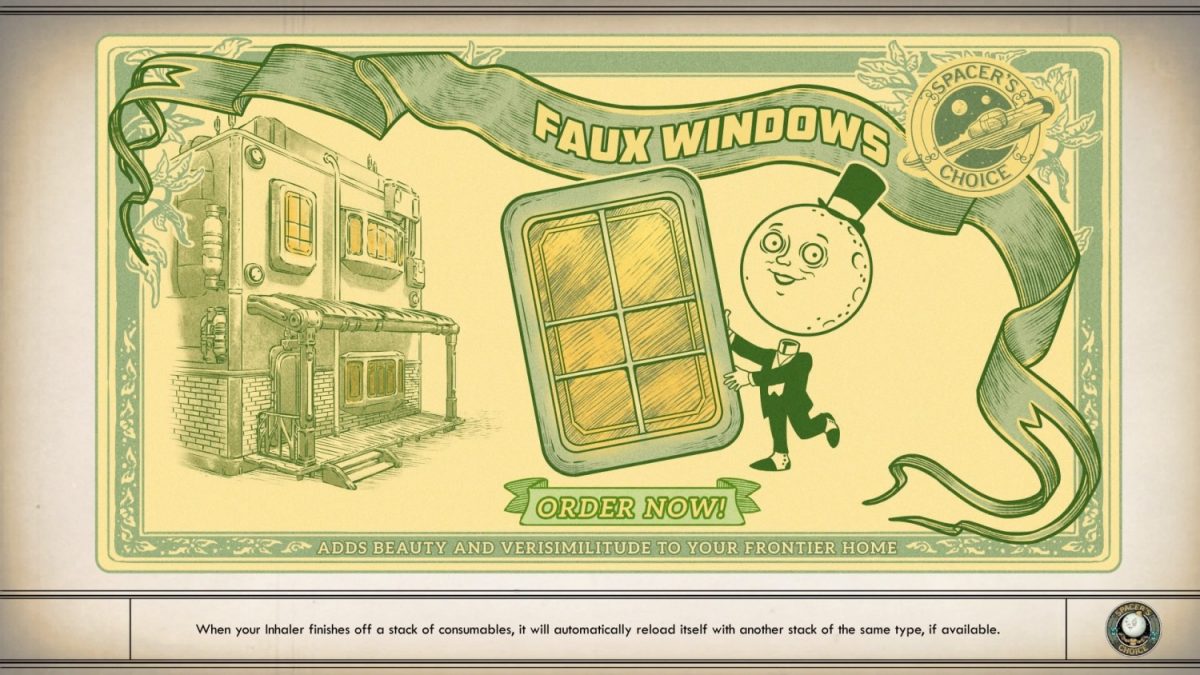
Playtime in The Outer Worlds will range vastly, depending on your choices, falling from somewhere between 10 hours (if you make a beeline for the main quests) and 40 (if you do a good mix of main and side quests). Again, the replay value of The Outer Worlds, though still quite great, is hurt slightly by the lack of endgame content, or even a New Game+, if you’re into that sort of thing.
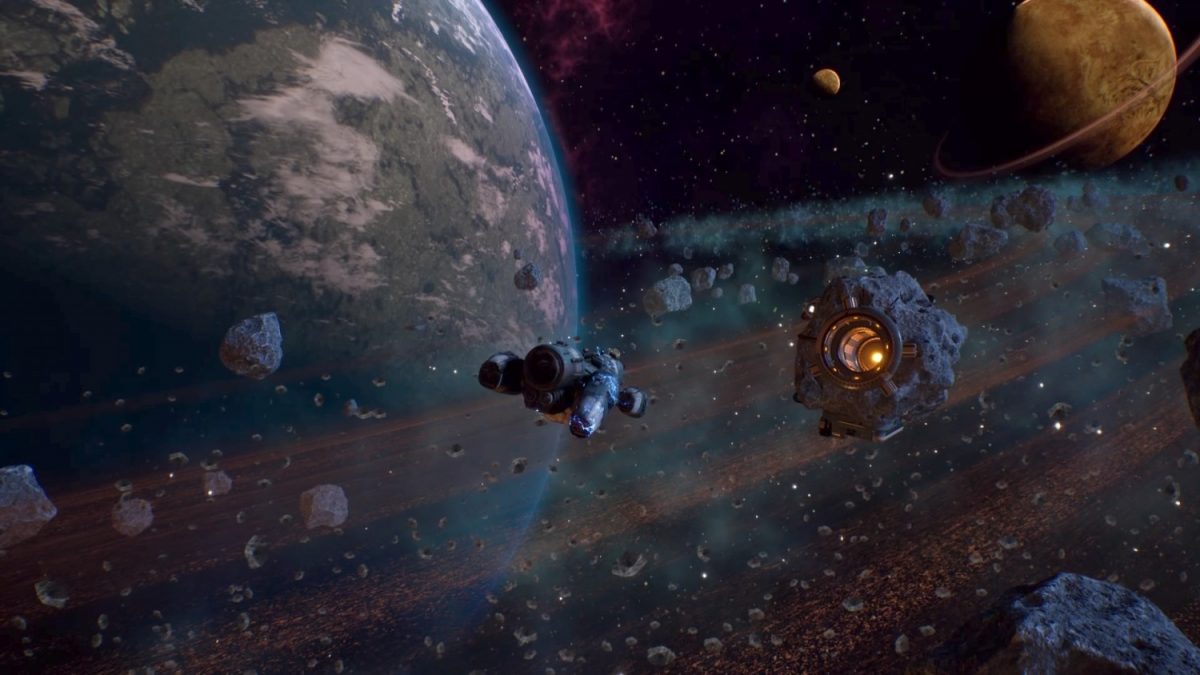
That said, what Obsidian has done is make a pure and simple role-playing experience, and done it well they have.
GEEK REVIEW SCORE
Summary
Obsidian has nailed it again with another stellar RPG. While by no means a perfect game, The Outer Worlds successfully brings back the glory days of the traditional western RPG, blending story and gameplay quite beautifully together, without really compromising each other.
Overall
9/10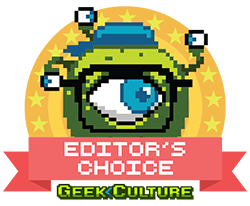
-
Gameplay - 8.5/10
8.5/10
-
Story - 10/10
10/10
-
Presentation - 8.5/10
8.5/10
-
Value - 9/10
9/10
User Review
( votes)Marion has a serious RPG addiction. Sometimes it bleeds into real life; he forgets to sleep because he thinks he has a Witcher’s body clock. Forgive him in advance if he suddenly blurts out terms such as “Mind Flayer” and “Magic Missile”, because never once does he stop thinking about his next Dungeons & Dragons game.

